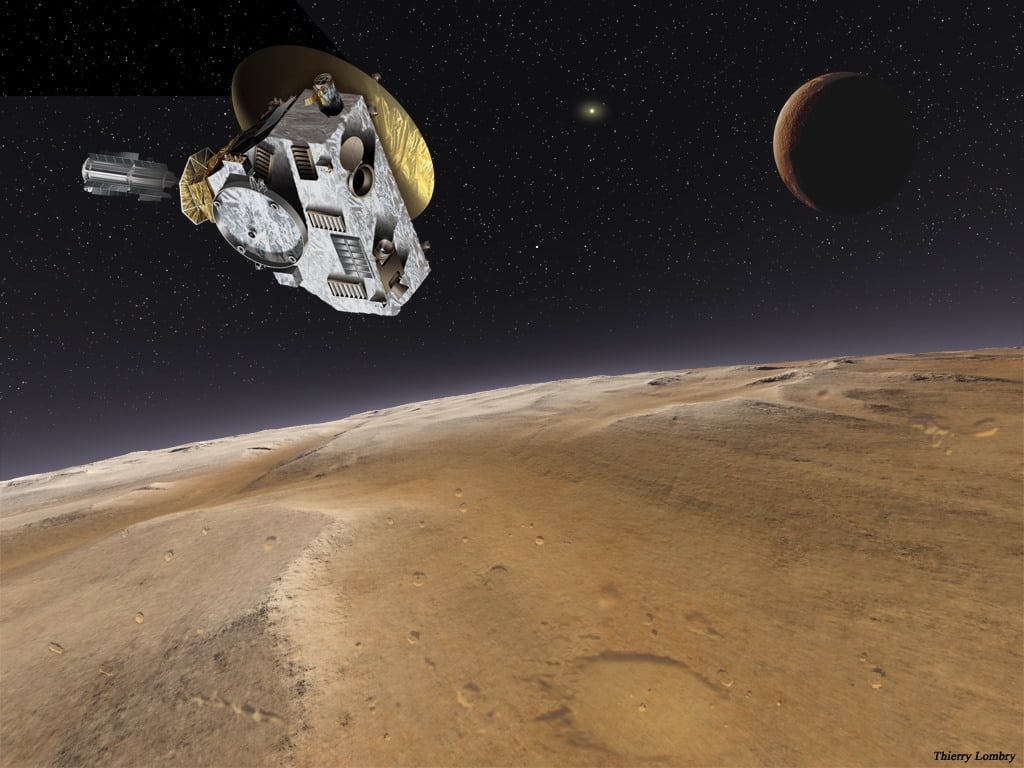[/caption]
It may not have noticed anything different as it continued its high-speed trek through interplanetary space, but today New Horizons passed a new milestone: it is now (and will be for quite some time)
the closest spacecraft ever to Pluto!
This breaks the previous record held by Voyager 1, which came within 983 million miles (1.58 billion km) of the dwarf planet on January 29, 1986.
New Horizons has been traveling through the solar system since its launch on January 19, 2006 and is now speeding toward Pluto at around 34,500 mph (55,500 km/hr). It has thus far traveled for 2,143 days and is just over halfway to the distant icy world.
– Alan Stern, New Horizons Principal Investigator
A gravity boost obtained by a close pass of Jupiter in 2007 gave the spacecraft the extra speed needed to make it to Pluto by 2015. (Without that, it wouldn't have been reaching Pluto until 2036!)
Achievements like this are wonderful indicators that New Horizons is alive and well and that its historic goal is getting increasingly closer every day.
[caption id="attachment_91519" align="alignright" width="225" caption="Diagram of the Pluto-Charon encounter in July 2015 (NASA/APL)"]
[/caption]
"We've come a long way across the solar system," said Glen Fountain, New Horizons project manager at the Johns Hopkins University Applied Physics Laboratory (APL). "When we launched it seemed like our 10-year journey would take forever, but those years have been passing us quickly. We're almost six years in flight, and it's just about three years until our encounter begins."
See answers to some FAQs about Pluto
New Horizons will pass by Pluto and its moons on July 14, 2015, becoming the first spacecraft ever to visit the distant system. It will image Pluto's surface in unprecedented detail, resolving features as small as 200 feet (60 meters) across.
New Horizons will not land or enter orbit around Pluto but instead quickly pass by and continue on into the Kuiper Belt, where even more distant frozen worlds await. The New Horizons team is currently investigating further exploration targets should its mission be extended.
Read more on the New Horizons mission site.
[caption id="attachment_91515" align="aligncenter" width="580" caption="The New Horizons mission timeline (click to enlarge). Credit: NASA/Johns Hopkins University Applied Physics Laboratory/Southwest Research Institute."]
[/caption]
 Universe Today
Universe Today
